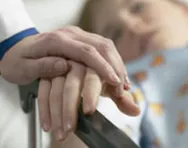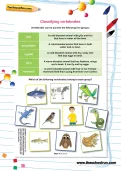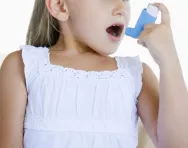Important update from TheSchoolRun
For the past 13 years, TheSchoolRun has been run by a small team of mums working from home, dedicated to providing quality educational resources to primary school parents. Unfortunately, rising supplier costs and falling revenue have made it impossible for us to continue operating, and we’ve had to make the difficult decision to close. The good news: We’ve arranged for another educational provider to take over many of our resources. These will be hosted on a new portal, where the content will be updated and expanded to support your child’s learning.
What this means for subscribers:
- Your subscription is still active, and for now, you can keep using the website as normal — just log in with your usual details to access all our articles and resources*.
- In a few months, all resources will move to the new portal. You’ll continue to have access there until your subscription ends. We’ll send you full details nearer the time.
- As a thank you for your support, we’ll also be sending you 16 primary school eBooks (worth £108.84) to download and keep.
A few changes to be aware of:
- The Learning Journey weekly email has ended, but your child’s plan will still be updated on your dashboard each Monday. Just log in to see the recommended worksheets.
- The 11+ weekly emails have now ended. We sent you all the remaining emails in the series at the end of March — please check your inbox (and spam folder) if you haven’t seen them. You can also follow the full programme here: 11+ Learning Journey.
If you have any questions, please contact us at [email protected]. Thank you for being part of our journey it’s been a privilege to support your family’s learning.
*If you need to reset your password, it will still work as usual. Please check your spam folder if the reset email doesn’t appear in your inbox.
Childhood meningitis – your need to know guide

While meningitis and meningococcal septicaemia (blood poisoning) can affect anyone at any time, children under 16 are the demographic group most at risk from catching the infection.
Meningitis is potentially fatal, killing more children under five than any other infectious disease. And even survivors can be left with severe, disabling after-effects, including brain damage, deafness and, where septicaemia has occurred, loss of limbs.


Download fantastic science resources today!
- Experiments And Science Fun pack
- Science Learning Programme for each school year
- All the instructions, questions and information you need
Every year there are at least 1,500 reported cases in under-16s, although experts estimate that there are actually twice as many cases in UK.
Meningitis in children
Young children and babies are more susceptible to meningitis because their immune systems are immature and their resistance has not fully developed. That said, adults can also get meningitis and it is a common misconception that it is a purely childhood disease.
What is meningitis?
Meningitis is the inflammation of the meninges, the protective layers surrounding the brain. There are two main types - bacterial and viral.
Bacterial meningitis
Although uncommon it is fatal in approximately one in 10 cases and one in seven survivors are left with a serious disability. Cases of bacterial meningitis tend to peak during the winter months, between September and April. Bacterial meningitis is treated with antibiotics, but it needs to be treated extremely quickly so urgent hospital treatment is vital.
Viral meningitis
While this is more common than the bacterial form, it's not usually as serious or as life-threatening. That said, it can cause memory loss, concentration problems, headaches, tiredness and depression in those that are unfortunate enough to get it. The symptoms are similar to those associated with bacterial meningitis they are usually less severe and for many patients it can feel like flu. For this reason many cases of viral meningitis go unreported.
Recognising the symptoms
Meningitis and septicaemia are not always easy to recognise at first. In the early stages, signs and symptoms can be similar to a number of other non life-threatening childhood infections, for example, ear infection or flu. Early symptoms can include fever, headache, nausea, vomiting and general tiredness.
Other typical symptoms include having a stiff neck, dislike of bright lights, joint or muscle pain and confusion. A fever with cold hands and feet and a rash that does not fade under pressure are signs of septicaemia.
What to do if your child is ill?
If a child is ill or obviously getting worse, parents are advised not to wait for a rash since it may appear late or not at all. It should also be noted that these symptoms may not appear in this order and some may not appear at all. The onset of the disease can be slow, however, deterioration is often rapid. Parents should trust their instincts and if in any doubt, contact their GP immediately.
Other resources:
www.meningitis-learning.org








